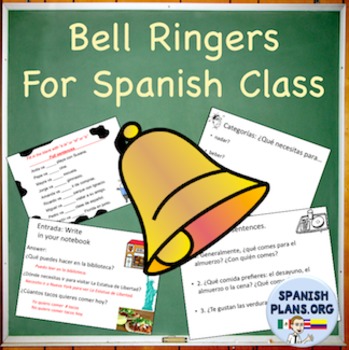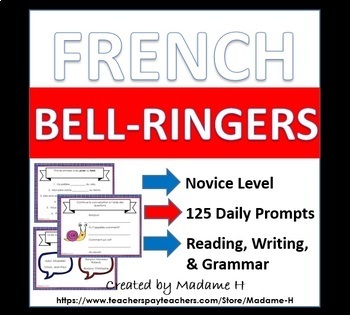As World Language teachers, we run into the big question: Should I focus my attention on communication and practicality or should I focus on grammar. Often, I hear teachers ask (myself being one of them) “How often do we visit a country where the target language is spoken and get asked to identify the parts of speech?” Probably not too often. But does this mean we should ignore grammar altogether? While more recently, many of us as World Language teachers are more communication and practicality focused (again, myself included), we must take into consideration
A collection of resources for World Language teachers including Spanish, French, German.
Pages
▼
Monday, August 28, 2017
Monday, August 7, 2017
5 Tips for Using Bell-Ringers in the WL Classroom
The summer is winding down and several teachers are preparing to return to school in the United States in the next few days or weeks. This post includes advice for getting the most out of the time you have with your students by implementing Bell-Ringers once class begins.
Research has shown over the years that Bell-Ringers are beneficial in many ways. Namely, they help to set the tone for the students that it is time to focus and learn. They also help students engage their prior knowledge from a previous class period. And finally, they allow the teacher to complete daily administrative tasks that are required such as taking attendance and passing out papers.
Here are 5 tips to ponder for the upcoming school year:
1. Have a Bell-Ringer already displayed on the white board or written on the board as students enter. Be sure to always include an example response so students can see what is expected. This will also eliminate students asking, "What are we supposed to do?"
2. Be sure the Bell-Ringer takes 5 minutes or less to complete. If the task is too complicated, students will be less likely to dive-in and respond to it. Plus, it is important to devote other time to learning new concepts.
3. Provide students with an answer sheet for the entire week or require them to keep their answers on one sheet of paper. This will cut down on the amount of paper shuffling that you do during the year. It will also encourage the students to be responsible for keeping up with their work.
4. Take up the answer sheets on Friday or the last day that your class meets for the week. Quickly look that the students attempted the answers and that they corrected any errors that they might have made. This will also give you an extra opportunity to see who is struggling and needs more of your attention. Add this assignment as a class work grade for class participation.
5. Spice things up by playing your favorite target language music as students complete the Bell-Ringer. Mix up the genre each day and be sure to write the artist's name on the board so students can listen to the music on their own time outside of class. Have a rowdy class? Play music with a slower rhythm to calm them down. Have a class who is still asleep or drowsy? Do the opposite and play tunes with some pep.
Here are some ready made Bell-Ringers to help save you some time and planning.
How do you use Bell-Ringers in your classes?


